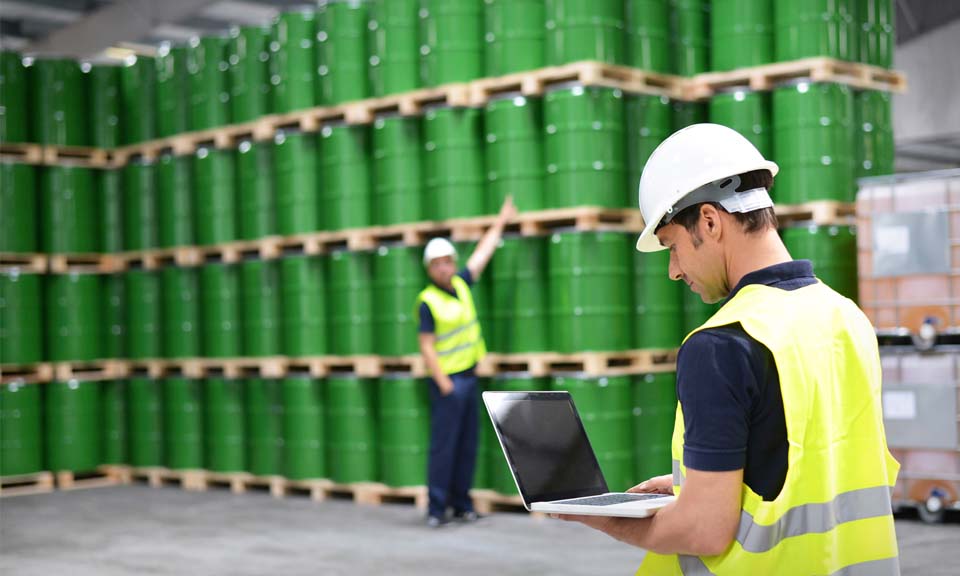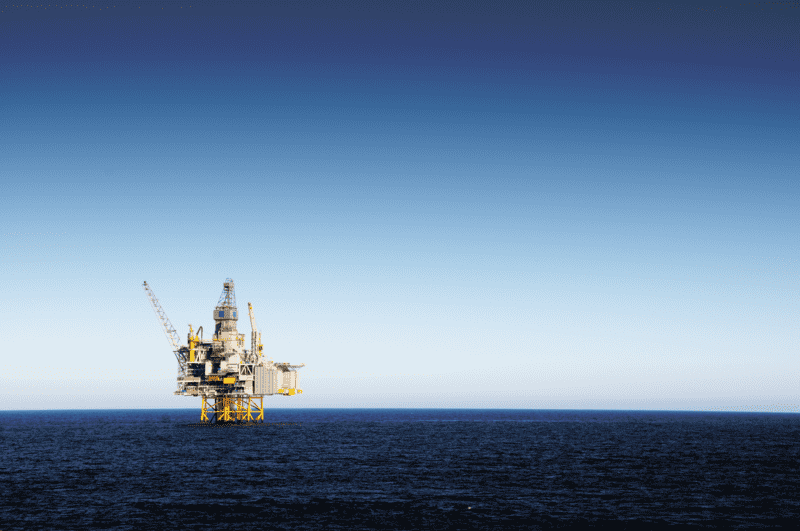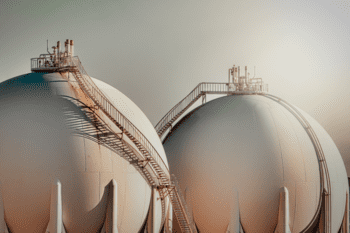Fuel for Thought: Tight oil market myth becoming reality

The crude market isn't that tight, but the oil market is. The bullish narrative going into the Russian-Ukraine crisis was driven by a short-term perspective and flawed thinking around crude fundamentals. Now the excessive strain on supplying transport fuels is turning bullish fiction into fact.
Market watchers may be guilty of viewing leading indicators out of context.
Take the apparent lack of oil in commercial storage. OECD stock levels are indeed below the five-year average and have sunk to multiyear lows. But what this fails to recognize is that by any longer yardstick these inventories are still high and were over-inflated by the shale boom the previous decade, where an excess of light sweet crude had nowhere to go except into tanks.
The International Energy Agency reported OECD total industry stocks fell by 42.2 million barrels to 2,611 million barrels in February, which still puts inventories above the 2013 nadir and even above averages seen a decade earlier.
The storage argument often overlooks China, too. The second biggest oil consumer has built up its capacity over the past five years, and crude stocks increased 20% since 2019, according to various analyst estimates.
Market watchers also point to OPEC+'s lack of global spare capacity, which, while true, downplays the fact that for much of the last two decades the average oil buffers have not been that much higher than the 2 million b/d mark.
There is still another 1 million b/d extra that could be brought on by the end of the year if Iran gets the green light even if that is still in the balance. Maybe that's why OPEC+'s recent meeting noted "the consensus on the outlook pointed to a well-balanced market, and that current volatility is not caused by fundamentals, but by ongoing geopolitical developments."
The argument from some corners that the mandated IEA strategic reserves release leaves the system short of emergency back-up and that the crude would have to be bought back at some point is also bizarre. It still means at least 120 million barrels entering a market in the next six months, and thus an increase in supply, that has seen few barrels lost so far, and around a quarter of that being oil products and the rest being crude.
| IEA oil stock draw contributions (million barrels) | |
| US | 60.559 |
| Japan | 15.000 |
| South Korea | 7.230 |
| Germany | 6.480 |
| France | 6.047 |
| Italy | 5.000 |
| UK | 4.408 |
| Spain | 4.000 |
| Turkey | 3.060 |
| Poland | 2.298 |
| Australia | 1.608 |
| Netherlands | 1.600 |
| Greece | 0.624 |
| Hungary | 0.531 |
| New Zealand | 0.483 |
| Ireland | 0.451 |
| Finland | 0.369 |
| Lithuania | 0.180 |
| Estonia | 0.074 |
| Total | 120.000 |
| Source: IEA | |
"Despite a major war and the possible loss of some Russian crude, oil prices remained below $120/b, which proves the point that market fundamentals do not support $100/b oil," said independent energy analyst Anas Al-Hajji.
Then there were the geopolitical jitters that saw crude prices spike from the cusp of triple digits toward $140/b in March on fears of sanctions, self-sanctions, boycotts and Russian oil being removed from the market. Even now commentators are keen to point to the lost barrels when there is patchy evidence the oil numbers are falling in any significant way.
S&P Global Commodity Insights analysis notes that "Russian oil exports so far continue to largely flow," with product loadings from Russian ports proving resilient in March, even for diesel seen as the tightest part of the product mix. The destinations may have changed, but the volumes haven't. A look at the differentials for key European grades assessed by S&P Global also indicates a market awash with light sweet crude.
Even the IEA noted in its monthly oil market report April 13 weaker-than-expected demand along with steady output rises from OPEC+ and the US should offset lost Russian supplies to help "bring the market back to balance."
But it's crunch time in the market as current arrangements for Russian purchases made before the war come up for renewal. S&P Global expects to see a loss of nearly 3 million b/d in Russian crude and products exports in the coming months as more buyers shun Russian oil.
And it's the middle of the oil barrel that will bend the market out of shape. The lack of diesel stocks and the importance of Russian diesel supply to Europe is showing up in the high gasoil and diesel cracks.
Stocks of diesel and gasoil in the Amsterdam-Rotterdam-Antwerp hub in Northwest Europe dipped 1.6% on the week to an 11-year low of 1.439 million mt in the week to April 20, Insights Global data showed April 21. And TotalEnergies' European refining margin indicator surged to $46.3/mt in the first quarter, up from $5.3/mt a year earlier, as distillate cracks ballooned on the back of the Russia crisis, it said April 19.
Goldman Sachs said in a research note "the current distillate shortage is even stronger than in 2008," pointing to the low stocks and large seasonally adjusted deficit which is getting worse, along with "a large increase in jet fuel consumption this summer due to the return of international travel" and continued gas-to-oil switching.
Indeed, refiners will often wiggle between maximizing production of jet or diesel, and with both likely being tight, options to plug the gap become limited. Add to that the fact that US summer driving season will start to put pressure on gasoline supply, and the oil products mix may start looking extremely tight.
Standard Chartered noted that "oil price volatility has been mirrored by volatility in estimates of key fundamental indicators," pointing out that while the downside to Russian oil output is large, so is the downside risk to demand. It then comes down to how much that eases the pressure on demand for transport fuels along with the oil products released from the IEA.
The fundamentals could soon start to catch up to the bullish sentiment. That leaves the question as to whether the market is pricing in the risk or has misunderstood it, potentially ending up being right for the wrong reasons.

News
Eni is to combine its North Sea oil and gas business with upstream independent Ithaca Energy, majority-owned by Israel's Delek, in a deal set to give the Italian company a 37.3% stake in the "satellite" entity, the companies said late April 23. The deal, first publicly mooted in late March, follows quickly on from Eni's acquisition of London-based Neptune Energy in January, which included an operating stake in the UK's highest producing gas field, Cygnus. The combination should result in 2024 production of over 100,000 b/d of oil equivalent, with a roughly equal weighting between oil and gas, and the potential to reach 150,000 boe/d by the early-2030s, the companies said. The deal continues a strategy for Eni of creating "satellite" joint ventures offshore Norway and Angola, although Delek is expected to remain the largest shareholder in this instance, with a 52.7% stake upon completion. The deal excludes Eni's East Irish Sea and carbon capture and storage projects, with the Italian company remaining the primary investor in flagship government-backed CCS project HyNet North West. Ithaca produced just over 70,000 boe/d in 2023, of which 66% was oil, and had warned its production from the current business would drop to 56,000-61,000 boe/d this year, reflecting the cancellation of several new projects due to the UK tax regime. It has struggled to make headway with the major West of Shetland Cambo oil project -- previously the target of environmental protests -- after entering the project in April 2022 with the purchase of Siccar Point Energy. Eni had production of around 50,000 boe/d offshore the UK in 2023. "The Satellite Model is a strategic response to the challenges and opportunities of energy markets, creating focused and lean companies able to attract new capital to create value through operating and financial synergies and the acceleration of growth," Eni said. "The combination will allow Eni to continue pursuing its successful growth on the UK continental shelf, thereby strengthening its commitment to the UK." Ithaca Executive Chairman Gilad Myerson said: "The synergistic combination with Eni's highly cash-generative UK continental shelf portfolio has the ability to unlock our long-life organic growth opportunities, creating a combined entity with substantial scale and longevity." Expanded asset base The combined entity will have reserves and contingent resources of some 658 million barrels of oil equivalent, including stakes in 37 producing assets, among them six of the UK's 10 largest fields -- Rosebank, Cambo, Schiehallion, the Mariner area, the Elgin-Franklin complex and the J-Area, the companies said. Ithaca already held stakes in Elgin-Franklin and the J-Area, which are thus increased by the combination. Elgin-Franklin, operated by TotalEnergies, is a significant contributor of both gas to the UK and liquids sold under the Forties crude brand, while the J-Area, operated by Harbour Energy, contributes to Ekofisk crude loadings; Forties and Ekofisk are key grades in the Platts Dated Brent price assessment process. Platts is part of S&P Global Commodity Insights. Ithaca is also Equinor's partner in the Rosebank oil project under development in the West of Shetland area, which has similarities to Cambo, while the Equinor-led Mariner field contributes UK heavy crude oil. The combination entails issuing to Eni new Ithaca shares equivalent to 38.5% of the enlarged entity, with Delek selling 3% of the enlarged share capital to ensure 10% or more remains in public hands on the London Stock Exchange. Dated Brent was assessed at $88.73/b on April 23, up $1.18 on the day, while the month-ahead UK NBP gas contract was assessed by Platts at 71.35 p/th.

News
Russia, one of the world’s largest oil suppliers, has increasingly turned to non-Western firms to transport its crude to overseas buyers during its ongoing war with Ukraine . With a dual goal of undermining Russia’s war chest without creating significant disruptions to global supplies amid inflation pressure, G7 countries and their allies have banned tanker operators, insurers and other services firms from facilitating seaborne Russian crude exports unless the barrels are sold for no more than $60/b. The price cap regime, which came into force Dec. 5, 2022, does not directly cover tankers flagged, owned and operated by companies outside the G7, the EU, Australia, Switzerland and Norway, and not insured by Western protection and indemnity clubs. While such ships tend to be older and less maintained, their share in Russia’s crude exports market has been rising in recent months amid strengthening prices of Urals -- the OPEC+ member’s flagship crude grade -- and tightening sanctions enforcement by the West. Non-price-capped tankers have a larger market share in shipping Russia’s Pacific crude exports, according to analysis of S&P Global Commodities at Sea and Maritime Intelligence Risk Suite data. Crudes such as Sokol, Sakhalin Blend, and Eastern Siberia–Pacific Ocean grades are more often involved in these trades than Russian barrels from Baltic or Black Sea ports like Urals. Tanker operators in Greece, Europe’s top shipowning nation, managed to keep their traditionally strong market position in Russia in the first few months since the price cap took effect before giving ways to their peers in the UAE, Russia, China and Hong Kong. (Latest update: April 5, 2024)

News
Recording changes to Russian oil exports and EU oil imports since the war in Ukraine Russia’s war in Ukraine has triggered a major upheaval in the global oil markets, forcing Moscow to find alternative buyers and Europe to source new supplies as Western sanctions seek to clamp down on Moscow’s vital oil revenues. With an EU embargo and the G7 price cap on Moscow's oil now fully in place, Russian seaborne crude exports have remained largely resilient as displaced volumes of its discounted oil flow East. Russian oil product exports have also mostly held up with new buyers in Africa absorbing Russian diesel and other fuels now banned from Europe. (Latest update: April 3, 2024)

News
Initiative driven by demand for batteries from vehicles, energy storage IOC aims to be carbon-free by 2046 Tie-up comes as India supports NEV buildup Japan's Panasonic Energy and state-run Indian Oil Corp aim to finalize details for a joint-venture to manufacture cylindrical lithium-ion batteries in India as early as June to September, the Japanese battery maker said April 1. Both companies will engage in "a feasibility study regarding the utilization of battery technology to facilitate the transition to clean energy in India," Panasonic said, and have signed a binding term sheet with details to emerge "by the summer of this year." The initiative by the companies "is driven by the anticipated expansion of demand for batteries for two- and three-wheel vehicles and energy storage systems in the Indian market", it said. The collaboration comes as India takes steps to build up infrastructure for manufacturing and supporting new energy vehicles, especially in its interim budget for 2024-25. Following the budget announcement, Chinese automaker SAIC Motor and India's JSW Group plan to install a production capacity of 200,000 vehicles/year in India, focusing on NEVs, with ramping up to start from the end of 2024. In China, NEV is a term used to designate automobiles that are fully or predominantly powered by electricity and include battery electric vehicles as well as plug-in hybrid EVs and fuel cell EVs. IOC's tie-up with Panasonic will support the energy company's goals to be a zero-carbon emitter by 2046. India's lithium-ion battery manufacturing industry is expected to grow at a compound annual growth rate of 50% from 20 GWh in 2022 to 220 GWh by 2030, data from the India Brand Equity Foundation showed. Platts assessed prices for battery grade lithium carbonate at $14,350/mt CIF North Asia March 28, flat from the previous session, S&P Global Commodity Insights data showed, while lithium hydroxide stood at $14,000/mt CIF North Asia, also unchanged from the session before. Platts Connect: News & Insights (spglobal.com)